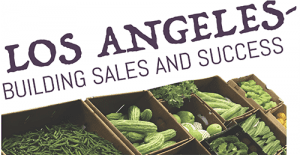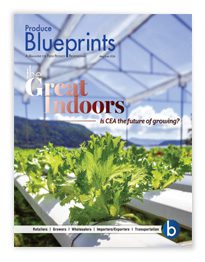More than a third of Los Angeles County’s 10 million citizens were born outside the United States, with the majority from Latin America and Asia, and a significant number from Mideast and African nations. With them come culinary traditions that make their way into kitchens and onto restaurant menus throughout the region.


Sam Thakker, sales manager at Daaks International LLC, which is located just off the Los Angeles Wholesale Produce Market, and specializes in okra, is experiencing rising demand for the vegetable that is very popular in the South but is frequently overlooked elsewhere in the United States.
“We’re bringing in more okra from Central America and Mexico, because demand for it has gone up among African, Indian, and Caribbean communities.”
In addition, he says, “We’re also seeing more requests for Asian vegetables including exotic eggplant varieties such as Egyptian graffiti, Chinese, and Japanese — and cherimoya (custard apple), bitter gourds, jujubes (Chinese red dates), and yellow dates from Riverside. We’re a vertically integrated company with our own growers but have to take advantage of imported products because of lower prices.”
Los Angeles’ stature as a center for innovative cuisine is often driven by the immigrants who have made it their home, or chefs trying to duplicate their home country favorites. Olympic Fruit & Vegetable Distributors/Coast Tropical operates on the market and from a nearby warehouse, and enjoys the ever-expanding diversity of its product line.
“In the last five years, imports have increased to about 30 percent of our business,” says James Alvarez, president of the supplier. “We import from Mexico, Guatemala, Panama, Costa Rica, Honduras, and Peru for avocados, mangos, organic bananas, and asparagus. From Ecuador we bring in bananas, pineapples, and mangos.”
Trends in produce, however, are not just represented by exotic fruits and rare vegetables. Twenty years ago, the top tomato varieties were round and Roma.
These two stalwarts, says Francisco Clouthier, president of Maui Fresh International LLC, “were 60 percent of our sales. Now we do more specialties such as mini Campari and heirloom tomatoes.
We have 30 to 40 SKUs where we used to have four. Customers like having the variety. We have relationships with vendors that have proprietary seeds and we always try to negotiate special pricing and deals.”
Part of the attraction for customers, over and above new varieties, is packaging and convenience. “There have been important changes in packaging,” says Clouthier. “Today’s consumers prefer produce in printed bags and clamshells rather than loose.”
Retailers like the innovations too, as they make for better presentation, often provide longer shelf life, and increase accuracy at the sales register.
This is an excerpt from the most recent Produce Blueprints quarterly journal. Click here to read the full article.


